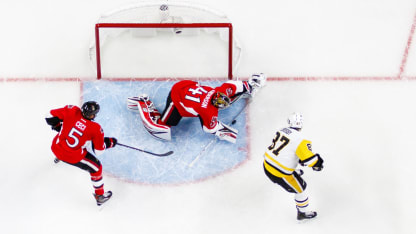For additional insight into the Eastern Conference Final between the Pittsburgh Penguins and Ottawa Senators, NHL.com has enlisted the help of Jim Corsi to break down the action. Corsi has been checking in throughout the series and dissecting the games from the Senators' perspective. He added to his responsibilities after Game 6 to talk about the Penguins' side of things too.
Corsi, 62, is the former goaltending coach for the Buffalo Sabres (2001-14) and St. Louis Blues (2014-17). He also played 26 NHL games with the Edmonton Oilers in the 1979-80 season.
Coach's analysis: Penguins don't need to change approach for Game 7
Former NHL assistant Jim Corsi says attacking Senators down low could be best way to return to Stanley Cup Final

© Jana Chytilova/Freestyle Photo/Getty Images

















